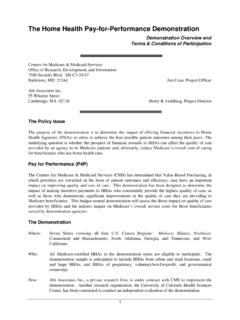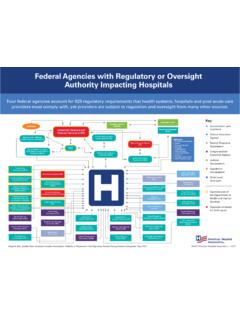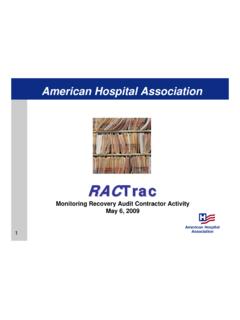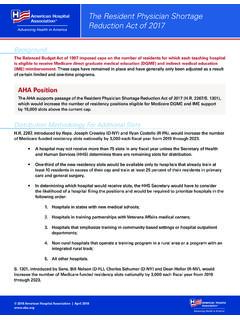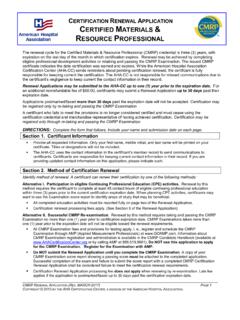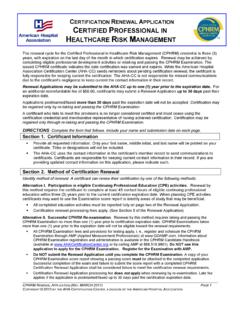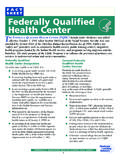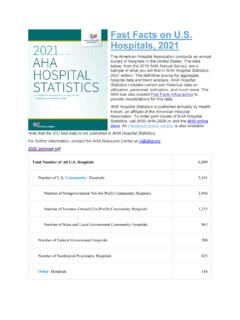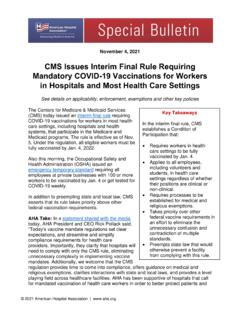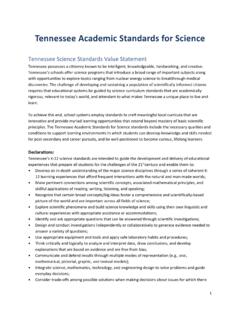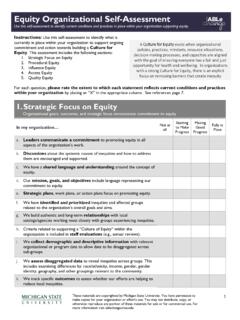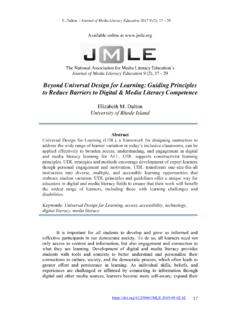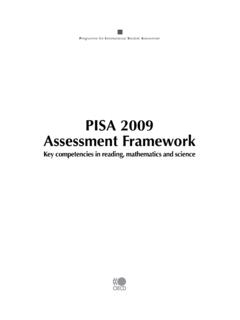Transcription of Signature Leadership Series
1 Signature Leadership Series Becoming a Culturally Competent Health Care Organization June 2013. Resources: For information related to equity of care, visit and Suggested Citation: Health Research & Educational Trust. (2013, June). Becoming a culturally competent health care organization. Chicago, IL: Illinois. Health Research & Educational Trust Accessed at Accessible at: Contact: or (877) 243-0027. 2013 American Hospital Association. All rights reserved. All materials contained in this publication are available to anyone for download on or for personal, noncommercial use only. No part of this publication may be reproduced and distributed in any form without permission of the publisher, or in the case of third party materials, the owner of that content, except in the case of brief quotations followed by the above suggested citation.
2 To request permission to reproduce any of these materials, please email 1 Becoming a Culturally Competent Health Care Organization Becoming a Culturally Competent Health Care Organization Background This guide is part of a continuing Series that will support hospitals and care systems as they work to reduce health care disparities and promote diversity in health care governance and Leadership . Becoming a culturally competent health care organization is a critical component in reducing health care disparities. A recent survey by the Institute for Diversity in Health Management, an affiliate of the American Hospital Association, found that 81 percent of hospitals educate all clinical staff during orientation about how to address the unique cultural and linguistic factors affecting the care of diverse patients and communities, and 61 percent of hospitals require all employees to attend diversity training.
3 This is a positive start, but more work needs to be done in this area. In 2011, the American College of Healthcare Executives, American Hospital Association, Association of American Medical Colleges, Catholic Health Association of the United States, and National Association of Public Hospitals and Health Systems stood together in a call to action to eliminate health care disparities. Our focus is on increasing the collection of race, ethnicity and language preference data;. increasing cultural competency training; and increasing diversity in governance and Leadership . As national partners, we are committed to these focus areas and will support quality improvement in health care through shared best practices and resources. Ensuring that all hospitals prepare their clinicians and staff to meet the care needs of all patients is an important component of an overall effort to improve equitable care and a goal of the call to action.
4 2 Becoming a Culturally Competent Health Care Organization Introduction Cultural competence in health care describes the ability to provide care to patients with diverse values, beliefs and behaviors, including tailoring health care delivery to meet patients' social, cultural and linguistic needs1. A key component to new care delivery models, such as patient-centered medical homes and accountable care organizations, is the ability to engage and educate patients about their health status. While doing this is challenging with all patients, for diverse patient populations it can be even more difficult due to language barriers, health literacy gap, and cultural differences in communication styles. It is imperative that hospitals and health care systems understand not only the diverse patients and communities they serve but also the benefits of becoming a culturally competent organization.
5 Hospitals and care systems must prepare their clinicians and staff to interact with patients of diverse backgrounds to increase patient engagement and education and to help eliminate racial and ethnic disparities in care. To improve understanding of diverse cultures, hospitals and care systems should seek advice from individuals and groups in the communities they serve. These constituencies can help hospitals and care systems develop educational materials, increase patient access to services and improve health care literacy . In 2013, the Office of Minority Health, Department of Health and Human Services, issued enhanced National Culturally and Linguistically Appropriate Services (CLAS) Standards in Health and Health Care, and a blueprint with guidance and strategies to help implement them.
6 This first update to the standards since their initial release in 2000 expands upon the concepts of culture to reflect new developments and trends, and focuses on Leadership and governance as drivers of culturally competent health care and health care equity2. More information on CLAS Standards is available at the end of this guide. Benefits of Cultural Competence Cultural competence in a hospital or care system produces numerous benefits for the organization, patients and community. Organizations that are culturally competent have improved health outcomes, increased respect and mutual understanding from patients, and increased participation from the local community3. Additionally, organizations that are culturally competent may have lower costs and fewer care disparities4.
7 Figure 1. Benefits of Becoming a Culturally Competent Health Care Organization Social Benefits Health Benefits Business Benefits Increases mutual respect and Improves patient data collection Incorporates different understanding between patient Increases preventive care by perspectives, ideas and strategies and organization patients into the decision-making process Increases trust Reduces care disparities in the Decreases barriers that slow Promotes inclusion of all patient population progress community members Increases cost savings from a Moves toward meeting legal and Increases community reduction in medical errors, regulatory guidelines participation and involvement in number of treatments and legal Improves efficiency of care health issues costs services Assists patients and families in Reduces the number of missed Increases the market share of the their care medical visits organization Promotes patient and family responsibilities for health Source: American Hospital Association, 2013.
8 3 Becoming a Culturally Competent Health Care Organization Steps to Becoming a Culturally Competent Organization Before a health care organization becomes culturally competent, leaders must understand the local community and the role the organization plays within the community. Steps to becoming culturally competent include (1) analyzing data and microtargeting surveys to improve service for the local community, (2) communicating survey findings to determine priorities and (3) educating staff and aligning programming and resources to meet community needs. Figure 2 highlights the process involved for a health care organization to become culturally competent. Figure 2. Becoming a Culturally Competent Health Care Organization Community Survey Community Engagement The hospital or health care system analyzes demographic Staff Education data to determine the The hospital or health care composition of the local system communicates survey community and the hospital's findings to community Working with community patient population.
9 With this members and determines feedback and survey data, the analysis, the hospital or care priorities. This information hospital or care system system can conduct serves as the basis for staff educates staff on the microtargeting surveys to education. importance of cultural determine needs for the competence and the particular specific communities. cultural needs of patients that staff interact with each day. Source: American Hospital Association, 2013. Educational principles for Cultural Competence Becoming a culturally competent organization requires a thorough understanding of the principles that characterize cultural competence (see Figure 3). First, staff needs to understand the factors that are pushing hospitals and care systems to become culturally competent.
10 Hospital staff also needs to recognize and understand the cultural and clinical dynamics in interactions with patients. Becoming culturally competent involves developing and acquiring the skills needed to identify and assist patients from diverse cultures. With the necessary skills and mindset, staff can quickly identify the services required by a patient, thereby increasing positive health outcomes. 4 Becoming a Culturally Competent Health Care Organization Figure 3. Educational principles for Cultural Competence Effect of Cultural Influences/Clinical Encounters Explain the changing population of the United States Identify the service needs of the Describe the demographics of Create a basic understanding of patients, including interpreters the hospital's patient population how cultural influences shape interactions in society Examine the working Examine the health disparity relationship with interpreters data Examine how cultural influences impact the clinical encounter (important to use case studies) Creating the Skills and Background Desire to be Culturally Competent Source: American Hospital Association, 2013.
